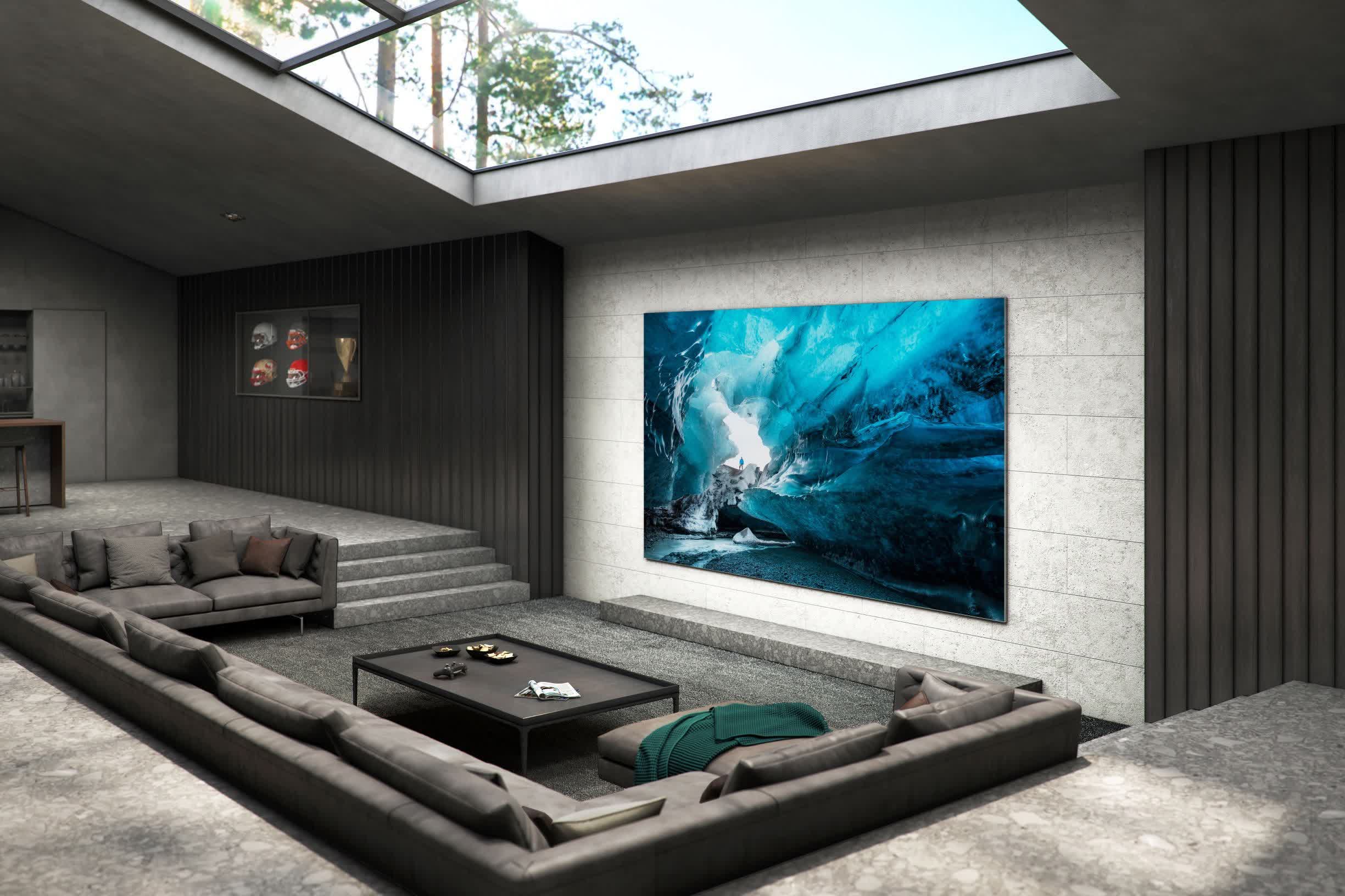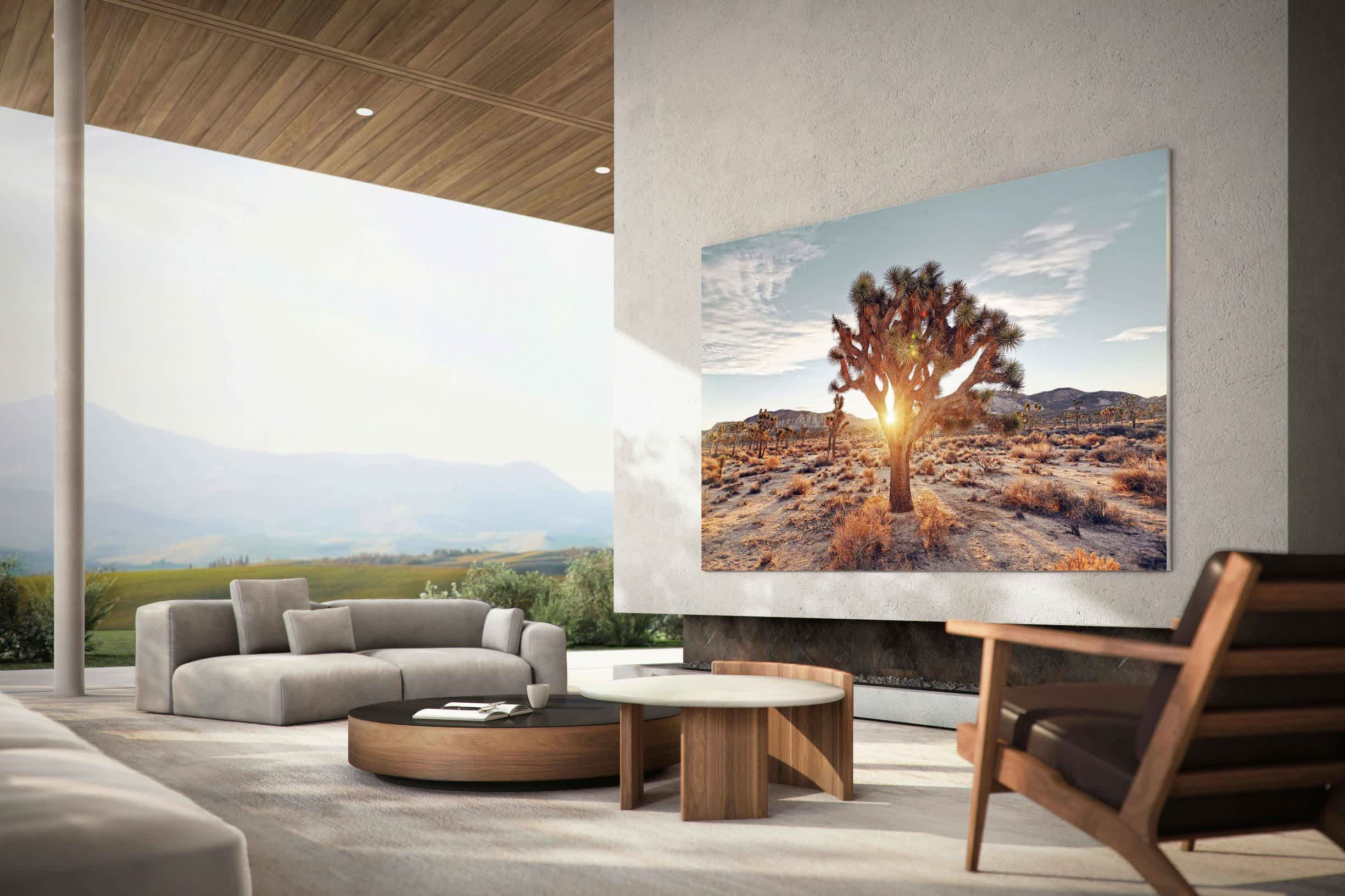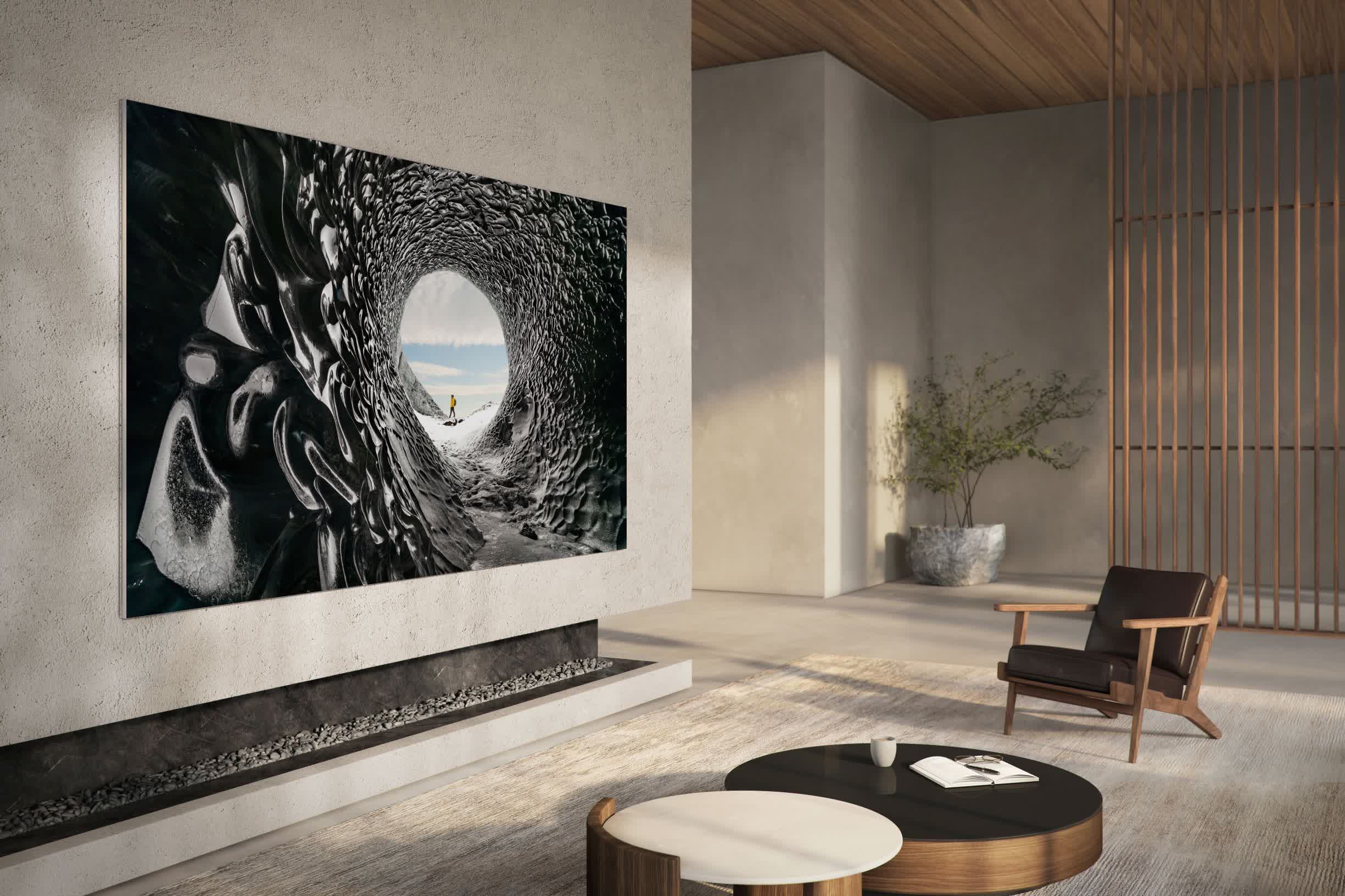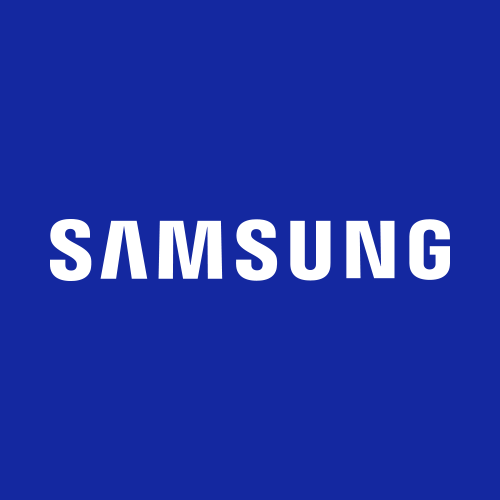Forward-looking: Samsung's MicroLED-packed The Wall modular TV has been on many people's "things to buy when I win the lottery" list for years. Now, the same technology is being used in a television that's slightly more traditional—I.e., not modular—but still measures a massive 110 inches and promises some amazing features.
Samsung first introduced the 146-inch Wall TV at CES 2018. That was followed by The Wall Luxury a year later, which can be configured from 73 inches in 2K right up to 292 inches in 8K. The newly announced television uses the same micrometer-sized LED lights. This time, though, they're packed into a 110-inch prefabricated model, streamlining the installation and calibration process.
MicroLEDs offer similar benefits as OLED TVs, with inky blacks and amazing contrast. Samsung says they "eliminate the backlight and color filters utilized in conventional displays," explaining that the technology is self-illuminating, producing light and color from its own pixel structures.
"It expresses 100% of the DCI and Adobe RGB color gamut, and accurately delivers wide color gamut images taken with high-end DSLR cameras. This results in stunning, lifelike colors and accurate brightness from the display's 4K resolution and 8 million pixels," writes the Korean giant.
While it offers some of the best elements of OLED TVs, MicroLED is inorganic, meaning it lasts longer and there's little to no danger of burn-in. Samsung says it will last around 100,000 hours, or "up to a decade."
It's not only the picture that's said to be excellent; the MicroLED TV features an "embedded Majestic Sound System" that enables "5.1 channel sound with no external speaker." It also comes with Object Tracking Sound Pro that can identify objects on screen and project the sound to follow the action.
Another intriguing-sounding feature is the Multi View that allows four different sources of content from multiple external devices to appear on up to 55-inch-sized split screens (in full HD), which could be ideal for gaming and watching streams at the same time. There's also a screen-to-body ratio that puts smartphones to shame: 99.99 percent.
Speaking of games, there's no word on whether the TV comes with HDMI 2.1 support for enjoying some 4K/120Hz action. The Wall Luxury does have a 120Hz refresh rate, but we'll have to wait and see in this case.
The biggest question, of course, is the price—something Samsung hasn't revealed. It's not going to be within everyone's reach, obviously: its 98-inch Q900 8K QLED TV is currently $60,000, and that's down from the usual price of $100,000. We'll discover more details when the MicroLED 4K television becomes available globally in the first quarter of 2021.
https://www.techspot.com/news/87917-samsung-reveals-110-inch-microled-4k-television.html



